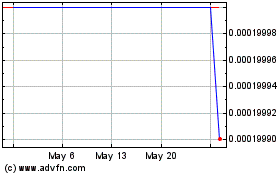Drilling at Gibson Gulch - Positive Impact expected on Dejour's valuation - Analyst Blog
August 03 2011 - 1:28AM
Zacks
Steven Ralston, CFA
Drilling at Gibson Gulch - Positive Impact expected on
Dejour’s valuation
With Dejour (DEJ) having filed
a Master Development Plan with the Bureau of Land Management, 16
natural gas wells per year are expected to be drilled into the
Williams Fork structure starting in the fourth quarter of 2011 (or
roughly 4 wells per quarter). Sometime in the first quarter of
2012, the company plans to frack the first group of approximately 8
wells that were drilled during the fourth quarter of 2011 and the
first quarter of 2012.
Importantly, as the wells begin to produce, the natural gas
reserves associated with these wells become proved developed
producing reserves (PDs or PDPs) instead of proven undeveloped
reserves (PUDs). Our valuation analysis utilizes the NAV value of
all proven reserves, both developed producing and undeveloped.
Being based only on proven reserves, the NAV is calculated using
the PV10 value of reserves, that is, the present value of pre-tax
estimated future revenues generated from proved reserves, using
prices without escalation and discounted at 10%.
However, we are cognizant that there are nuances concerning the
quality of reserves that are not captured in our valuation model.
One such feature is that by treating PDs and PUDs similarly, our
model does not capture some of the inherent risks of PUDs. Since
uncertainties exist about the ultimate conversion of PUDs to PDs,
there is an inherent discount valuation related to PUDs that must
be considered.
In the case of Dejour, the majority of proven reserves are
undeveloped ($83 million of the $108 million). However, these PUDs
are within or adjacent to a known producing gas field. In addition,
Williams Companies is extending a pipeline from its Grand Valley
gathering system to the Kokopelli Field, where Dejour’s PUDs are
located. This both reduces most of the uncertainties related to the
PUDs and also provides an efficient method to transport Dejour’s
natural gas into a large-scale, high-volume distribution
system.
We expect a positive valuation increment in the marketplace as PUDs
become PDs. When the uncertainties associated with PUDs abate, the
discount to NAV that pertains to the PUDs at Gibson Gulch will be
reduced or be entirely eliminated. As the PUDs become producing
wells in the first quarter of 2012, the marketplace may not only
eliminate the discount to NAV of those 8 wells, but also reduce or
eliminate the discount related to a portion or all of the other 212
PUDs located at Gibson Gulch. As the certainty of the value of the
PUDs increases, we expect the valuation of Dejour’s stock to
approach Net Asset Value.
Dejour’s NAV is estimated to be $125 million ($1.03 per share). The
$125 million is attained by adding the company’s assets of $20
million of land (at cost), $108 million of PV-10 Proved Reserves
and net cash of $1.5 million and then deducting $4.5 million in
debt (listed as a current liability on the company’s balance
sheet). Therefore, our target price is $1.00 per share. We continue
to rate Dejour an Outperform.
DEJOUR ENERGY (DEJ): Free Stock Analysis Report
Zacks Investment Research
DXI Capital (CE) (USOTC:DXIEF)
Historical Stock Chart
From Jun 2024 to Jul 2024

DXI Capital (CE) (USOTC:DXIEF)
Historical Stock Chart
From Jul 2023 to Jul 2024

Real-Time news about DXI Capital Corporation (CE) (OTCMarkets): 0 recent articles
More Dejour Energy Inc. Ltd Ordinary Shares (Canada) New News Articles